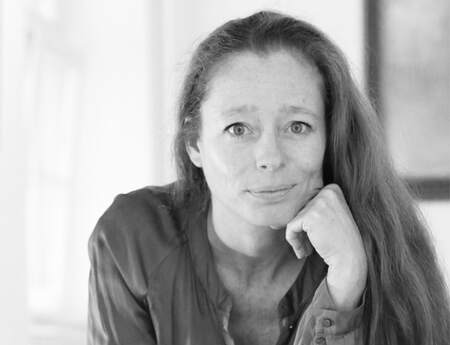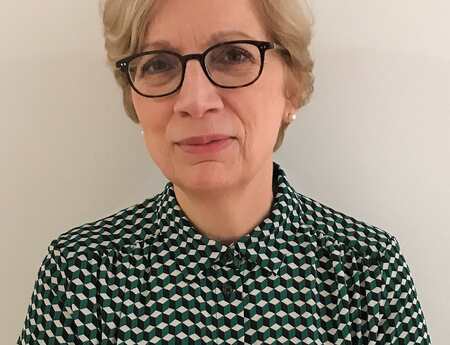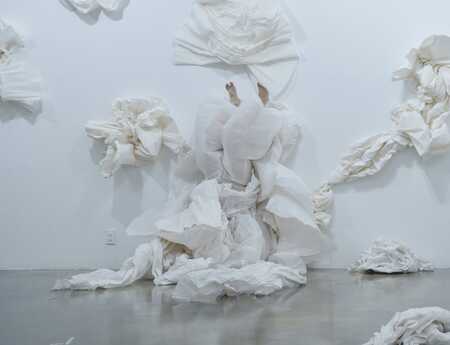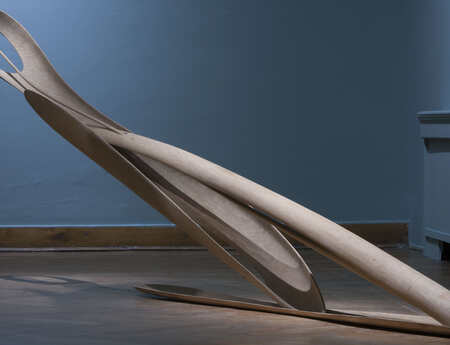Strength, Love, Fearlessness, Impact: The Women Sculptors Mancoba, Martins and Waldberg
The Bucerius Kunst Forum Hamburg presents with IN HER HANDS – WOMEN SCULPTORS OF SURREALISM the works of three internationally renowned female sculptors: Sonja Ferlov Mancoba, Maria Martins und Isabelle Waldberg. This highly recommended exhibition runs until 1 June 2025 and showcases sculptural works from the 1930s onwards, providing insight into the artists’ eventful and poignant lives.
The exhibition aims to rediscover the work of three female sculptors who achieved considerable success both in Europe and beyond. Although these artists were well-known in their respective home countries, their work was largely overlooked in Germany.
Learning more about these artists and their work – and speaking about them – is definitely worthwhile. Although the works embody the fundamental elements of the artistic process (reflexion, consequence, focus, method and precision) and would function independently of the artists’ biographies, the lives and motivations of the three artists are of considerable interest.
The exhibition space of app. 800 square meters features a collection of over 100 sculptures, paintings, collages and drawings, spanning the period from the 1930s to the 1970s.
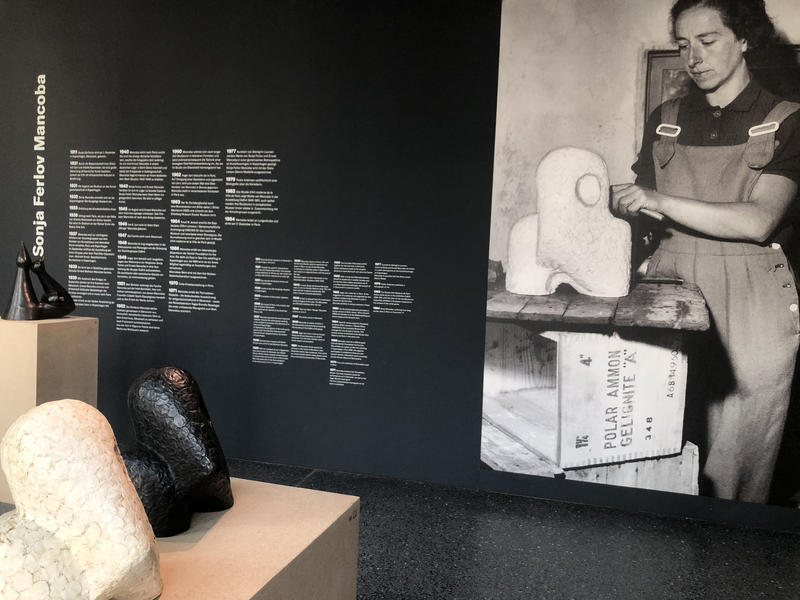
Danish sculptor Sonja Ferlov Mancoba (1911-1984) was heavily influenced by non-European art and the CoBrA art movement when developing her organic formal language. In 1948, she played a pivotal role in the discussions and planning that led to the formation of the avant-garde CoBrA art group. The following year, Asger Jorn attempted to include Sonja Ferlov and Ernest Mancoba in a CoBrA group exhibition but was unsuccessful. It is still unclear whether sexism or racism was the reason for this decision. However, according to the art historian who guided the tour around the Hamburg exhibition, it was clearly racist intolerance that led the couple to leave Denmark and return to France in 1952. Sonja Ferlov first moved to Paris in 1940, and she was probably the only Danish artist to remain there throughout the war. In the same year, Ernest Mancoba was sent to an internment camp, where he remained until the end of the war. Sonja Ferlov and Ernest Mancoba were married in the La Grande Caserne camp in 1942. Despite the extreme poverty of this difficult period, Sonja Ferlov Mankoba dedicated herself to completing her major work Sculpture 1940-1946
In accordance with the requirements of Surrealism, she worked intuitively from the outset, using clay and plaster (and later bronze) to model her naturalistic creatures, warrior figures and masks.

In her work, Brazilian sculptor Maria Martins (1894-1973) combines the myths of Amazonia with a modern formal vocabulary, a practice that is all the more noteworthy given her high social status. As the wife of a diplomat, she travelled extensively during the Second World War, becoming intimately acquainted with her own roots and with indigenous ethnic groups in the process. Central themes in her work include dualities such as those between men and women, tradition and progress, or heaven and earth. Additionally, her work explores the female body from the perspective of self-determined sexuality.
These thematic elements recur throughout her work, but they are most distinctly manifested in her sculpture L’impossible.
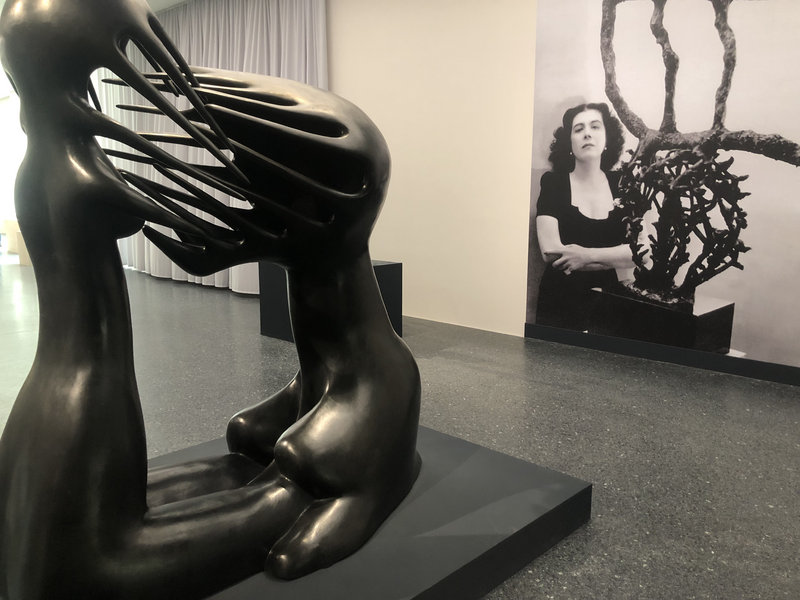
Isabelle Waldberg’s (1911-1990) works are characterised by their multifaceted nature, encompassing delicate linear beechwood structures, abstract bronzes, and collages. In this exhibition, her sculptures are displayed on white plinths. To make it easier to attribute each work to its respective artist, the pieces have been grouped on differently coloured plinths.
Margaretha Isabelle Maria Farner was born in Oberstammheim in the German-speaking part of Switzerland in 1911. In 1936, she relocated from Zurich to Paris, where she met Alberto Giacometti. She was part of the circle around George Bataille’s secret society Acéphale (c. 1938), where she met her future husband, Patrick Waldberg. Like many others, they emigrated to New York in 1942, where they met and networked with other intellectuals who had also fled Europe. Isabelle Waldberg returned to Paris in 1945 and participated in the Exposition internationale du surréalisme at the Galerie Maeght in Paris in 1947. Over the following decades, she exhibited her work at numerous exhibitions both at home and abroad; she also wrote and curated. Waldberg and her husband separated in 1953. Following this, her sculptures became more powerful, voluminous and figurative. An example of this can be seen in her 1958 work Suivi de … (eng. Followed by …).
Waldberg completed the Portrait of Marcel Duchamp in 1958. Many years later, one of the three bronze casts was included in an extraordinary tribute to Duchamp. The bust was placed on an old Chinese chessboard, alongside two pawns, two other bronzes by Waldberg and an iron beam used to dry negatives, which belonged to Man Ray! Duchamp himself was a passionate chess player and took part in four Chess Olympiads. It was not until after his death in 1968 that Waldberg arranged these objects in commemoration of the remarkable artist. The work is dated 1958-1978 (Kunstmuseum Bern, Inv. Pl 81.008).

In 1973, Isabelle Waldberg became the first female professor of sculpture at the École des Beaux-Arts in Paris.
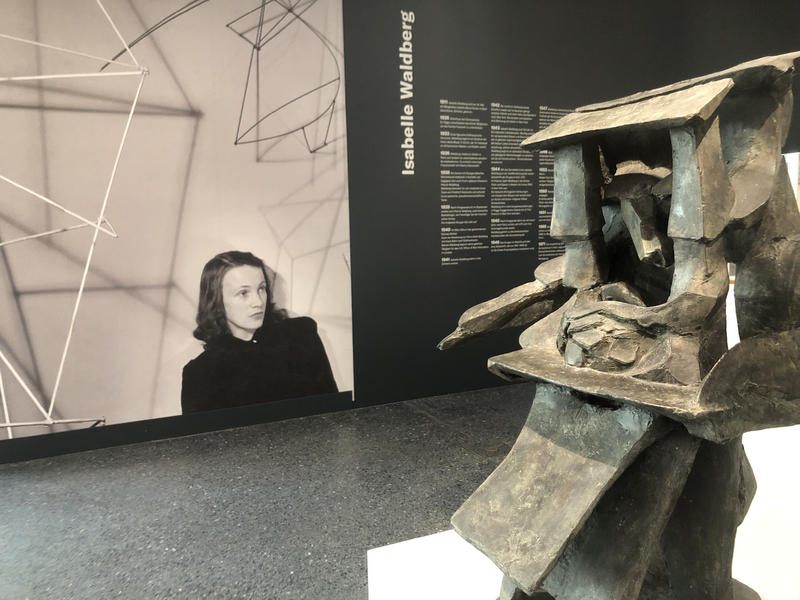
The three female sculptors were part of the international avant-garde scene in Paris before the Second World War. Since 1942, Martins and Waldberg had also been active within the New York art scene. They moved in the same circles as Marcel Duchamp, Alberto Giacometti, Piet Mondrian and Peggy Guggenheim.
Those involved in artistic legacies understand the importance of the question: How did artists engage with their own work? The interactive and successful scenography of the Hamburg exhibition makes reflecting on this all the more enjoyable. The windows have no covering, allowing daylight to enter – a first for the new building, which the Bucerius Kunst Forum has occupied since 2019. Only two walls are used along the exhibition tour path, with plinths and an open wall system employed to display the works. Semi-transparent curtains serve as partitions, adding a flowing design element. The sculptures are, of course, displayed on plinths, which allows viewers to see them from all angles.
By the way: The plinths will be auctioned after the exhibition closes! Large-format historic photographs on the walls frame the exhibition hall.
Although the works on display are grouped by artist, the configuration nevertheless allows for engagement and dialogue: “Intense, sensual and spiritual confrontations with the materials are evident in the design of the lines, volumes and spaces, and in the expressive gestures of the objects. The sculptural ensembles enable viewers to immerse themselves in the artists’ visual worlds.”
Guest Contribution by Jana Noritsch drawing on the exhibition booklet, a guided tour of the exhibition, and In Her Hands Bildhauerinnen des Surrealismus published by Katharina Neuburger and Renate Wiehager for the Bucerius Kunst Forum, Hamburg 2025.
Written by Jana Noritsch in German.
Photos: Elisabeth Pilhofer.

